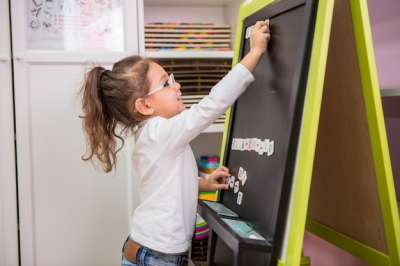ESA Method and Why You Should Use it

As we all know, students will be eager to learn and be more active during the class if they are properly motivated and interested in the lesson. There is no better way to motivate and engage students to learn a new lesson than the ESA method. ESA method is very useful for students as well as for teachers. With ESA method teacher can present a lesson to the class in a variety of interesting ways. ESA method has 3 stages: Engage, Study and Activate.
This post was written by our TEFL certification graduate Darko R. Please note that this blog post might not necessarily represent the beliefs or opinions of ITTT.
Listen to this blog post:
Engage
Engage is the first stage and in this stage, the teacher can use different kinds of methods to inspire and engage students to learn new lessons. If students think the lesson is boring, or teacher just started lesson without engaging them students would find this kind of learning wrong and they will quickly get bored. The teacher should encourage students to talk and think on the English language about the topic, or some of their personal experiences that could fit in the topic. Teacher talk time in this stage should be minimized so that students would be free to talk as much as possible. This could be done with some interesting story, game or even a popular song. The teacher could also use pictures, short movies and ask questions that are associated with the lesson. This stage shouldn't be that long (maybe 20% of class) that is more than enough to engage students and get them ready for the study stage.

Also Read: 5 Strategies of Teaching Mixed Ability Classroom
Study
After successfully engaged students, the teacher goes to the next stage. When students are engaged, interested and familiar with the topic, the teacher slowly starts to present to the new content. This could be done in many ways: text, missing word game, song lyrics, and many other options. Presenting new knowledge is important and it's the key for students to understand new language and content. After quality and interesting presentation comes repeating and going through content a few more times. If some students have difficulty to understand this or make mistakes, the teacher should correct them and explain to them why they are not right and how to be sure that they won't make that mistake again. Students after this study will have all the needed knowledge for the next stage, where they will confirm and further enhance their knowledge.
Also Read: What does TEFL mean?
Activate
The last stage is activated stage. In this stage, the teacher gets students talking with new words as much as they can. Students can say something about themselves or things they do every day, but using words they learned in the previous stage. Students talk time in this stage should be maximized, while the teacher should only talk at the beginning of the stage to explain the rules if there is some game or activity that suits this stage. Games teacher could use at this stage are discussion, role-play or any other game or task that will make students think and talk on English, using as many new words as possible. For the teacher, this is also good feedback to see if students understood the lesson and if there are some mistakes that need to be corrected

Types of ESA Lessons
All of those 3 stages of ESA method are equally important and we can't leave any of them out, but it doesn't mean that it always has to be 3 stages. For example, we can have 3 engage stages 1 study stage and 2 activate stages. They don't have to be in the same order as well, we can have E1, A1, E2, S1, E3, A2 ESA LESSON. The only rule is that we start with engage stage and finish with activate stage. There are so many ways we can organize our ESA lesson, but there are 3 main groups we can classify.
Straight arrow is the simplest of all 3 ESA types. It literally follows the ESA pattern. Firstly, the teacher engages students, after that, the study and activate through games or activities. This type is simple, so it is good for simple and easy lessons it's not suitable for some complex or complicated lessons.
Also Read: Why is English for Specific Purposes as a Methodology so Effective?
Boomerang- could be used for some more complicated lessons. Boomerang lesson would look like this Engage, activate 1, study, activate 2. In the first activate stage, the teacher should think about a possible problem that can come up so they could be dealt with in the second activate stage.
Patchwork is the most complex of all 3 ESA types, the teacher can rely on this type when a lesson is so complex and the teacher knows which one of many stages to use. In patchwork type, there is plenty of engaging, study and activate stages that can improve knowledge of students and can make the lesson easier to learn and understand. The main rule is the same as for ESA method, begin with engaging, have as many steps between as you want, and finish with the activate stage.
Do you want to teach English abroad? Take a TEFL course today!
ESA method is good for teachers as much as it is for students and can help both of these 2 groups to complete their goal easier. For a teacher, the ESA method helps to keep lesson organized, and as well as keeping students focused and engaged, especially for new teachers. ESA method makes the lesson easier to understand for students, engage stage get them interested and ready to learn, study stage learn them new content on the interesting way and activate stage help the practice and fully understand the lesson. ESA method is a win-win method.
Apply now & get certified to teach english abroad!
Speak with an ITTT advisor today to put together your personal plan for teaching English abroad!
Send us an email or call us toll-free at 1-800-490-0531 to speak with an ITTT advisor today.
Related Articles:
- Step-By-Step Guide to Legally Teaching English in China
- 5 Reasons Why You Should Teach English in China
- The Best Apps to Have on Your Phone While Teaching English Abroad
- 7 Steps to Paying Off Your Student Loans While Teaching English Abroad
- Top 10 Cities in China for Teaching English Abroad
- Two Traveling Teachers Share What It's Like Teaching English Abroad as a Couple



